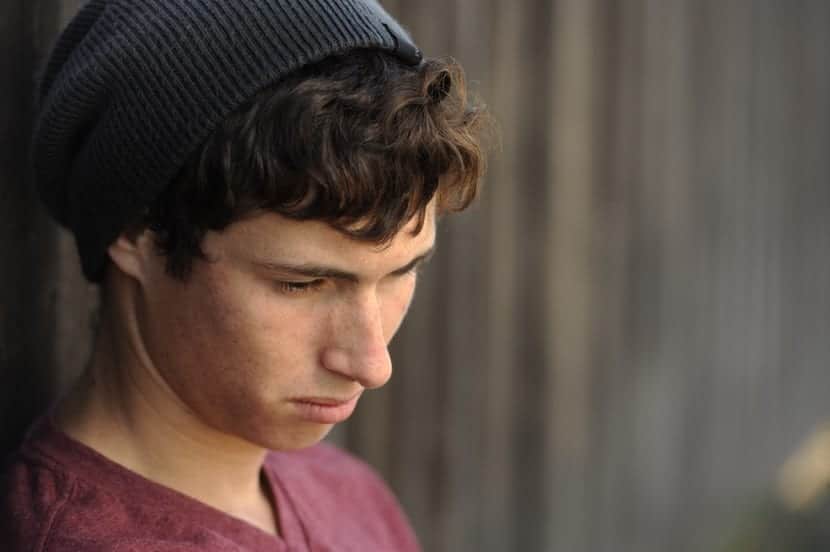
Teens are often prone to headaches, in fact it is one of the most common complaints. If your child is 15 years old, he may have already suffered at least one significant headache in his life. By the time a person reaches 18 years of age, at least 90% have experienced a severe headache. Girls have headaches more often than boys during adolescence.
Usually the headache is just a pain, but sometimes it can mean more things and it can even be dangerous.
Different types of headache in adolescence
Not all headaches are caused by the same problem in the body. There are many possible causes and they are generally classified into two types: primary and secondary.
Primary headache
Primary headaches happen out of nowhere without any medical conditions causing them. These include migraines, tension-type headaches, or cluster headaches. The causes of this type of headache are unknown. From dysfunction of neurons in the brain to changes in the vessels that supply blood to the brain, it is believed that there are a number of mechanisms that contribute to primary headaches.
Secondary headache
This type of headache is usually caused by another problem that exists in the body. The most common cause of these headaches is usually infections, sinusitis, or respiratory infections. Secondary headaches can also appear from taking medications, meningitis, head injuries, having high blood pressure, having a stroke, increased pressure in the head, an abscess, a brain tumor or a brain hemorrhage. These headaches occur less frequently than the primary ones, which are usually the most common among the adolescent and general population.

Headache patterns
If your teenager has a headache or just had a first headache, you need to know how to classify it. This can help you determine whether or not you need immediate medical attention. Headaches occur in a variety of patterns, with four most common:
- Acute headache. It usually resolves with or without treatment.
- Acute recurrent headache. The headache goes away but comes back.
- Chronic daily (non-progressive) headache. It is a headache that tends to be constant or occurs most days. This headache does not get progressively worse over time.
- Progressive chronic headache. This headache gradually worsens over time. Headaches come more often, become more severe, or both. This type of pain is the most worrisome since it requires immediate medical attention.
When the headache turns into a migraine
Migraine is a neurological disorder that involves acute, recurring headaches with moderate to severe pain. The two main types are migraine without aura (the most common) and migraine with aura. A teenager with a migraine may feel that the headache it is excruciating and can even be scary because of how debilitating it can be.
To differentiate a headache in your teenager from a migraine, you will need to know what the symptoms of the latter are. Symptoms of migraine include:
- Nausea and / or vomiting
- Throbbing or throbbing headache
- Sensitivity to light
- Sensitivity to sound
- Pain on both sides of the head
- Stomach ache
- Headache that gets worse with activity
- Aura (visual, sensory, or motor)

An aura is a symptom or some symptoms that occur just before a migraine. They can be flashes of light with or without loss of vision, numbness or tingling in a part of the body, weakness or even altered consciousness. If there is a family history of migraine, it is likely that your adolescent has it too.
Severe headaches
Headaches are painful and upsetting, and can sometimes be a sign of a serious problem. Some signs that a headache may indicate a larger medical problem include:
- A chronic headache that gets progressively worse.
- A headache that feels like the "worst headache" your teen has ever had
- Unusual clumsiness or trouble walking.
- Trouble thinking, seeing, or speaking
- Headaches or vomiting when you wake up in the morning.
- Stiff or painful neck
If your teenager has any of the above symptoms, then you will need to take him to the doctor as soon as possible. If your headache gets worse then you will need to go to the emergency room as soon as possible.
Diagnosis and treatment
Aside from emergencies, to diagnose a headache disorder, your teen's doctor will perform a physical exam, a neurological exam, and ask for a detailed history of your child's headaches. It is necessary that for the visit to the doctor you keep a diary of headaches that lasts for a minimum month so that the doctor can assess if there is any type of pattern in these pains.
You will be able to analyze factors such as the time of day the headaches occur, their severity, the headache or other symptoms that may occur, as well as what could have caused them, such as stress, not getting enough sleep or skipping meals . If required, the doctor will ask you to do a series of tests to find out what is happening.

When it comes to treatment, there are several options for treating headaches and migraines: prescription drugs, over-the-counter drugs, avoiding aspirin in teens under 16, changing lifestyle, having a more relaxed life, etc. It will be the doctor who must assess the cause of the pain and choose the most appropriate treatment based on that.
If you see that your child has a frequent headache, see your doctor for an assessment.